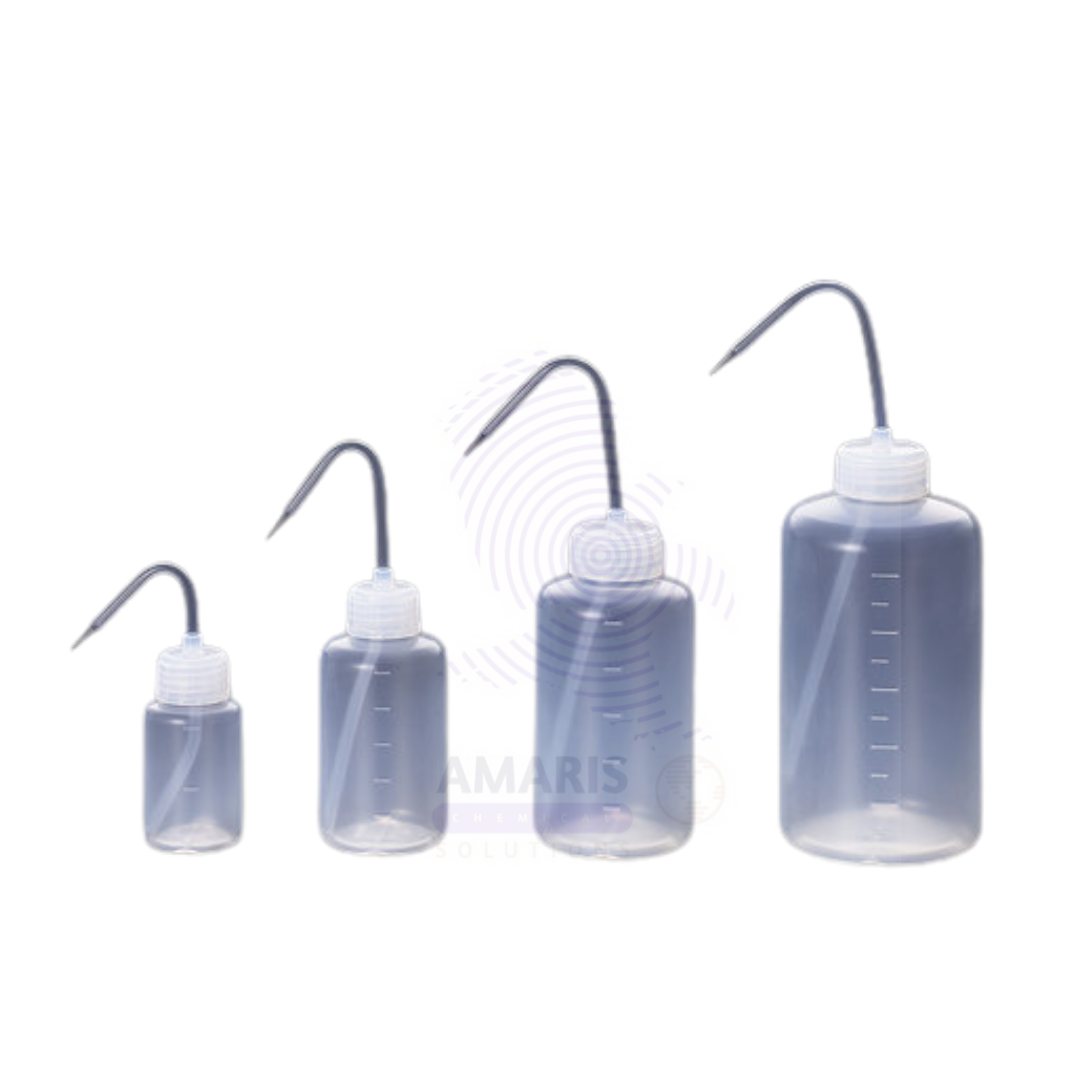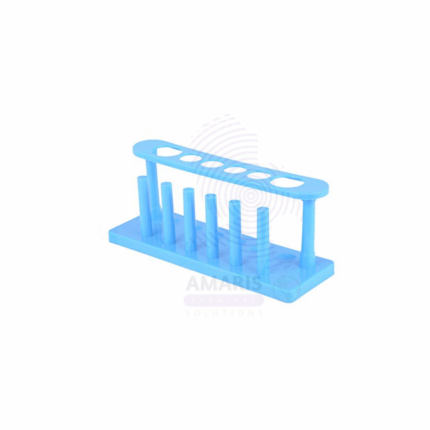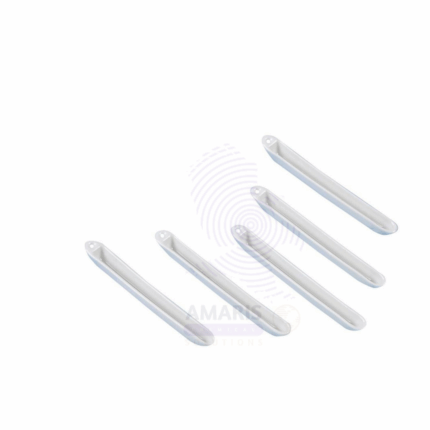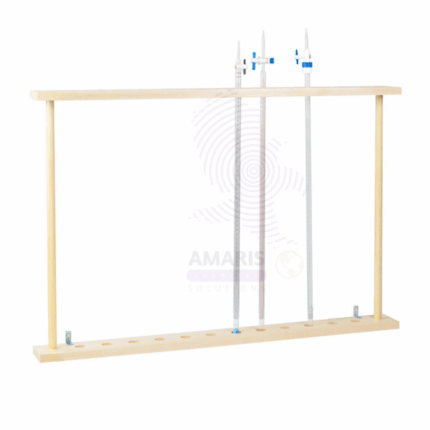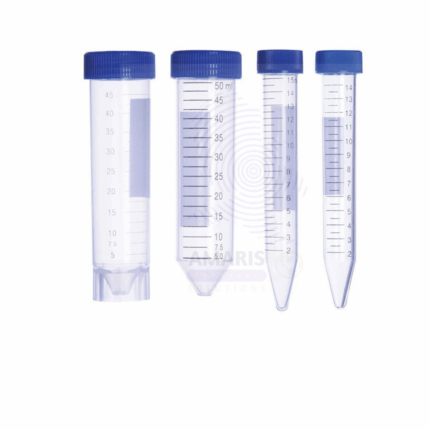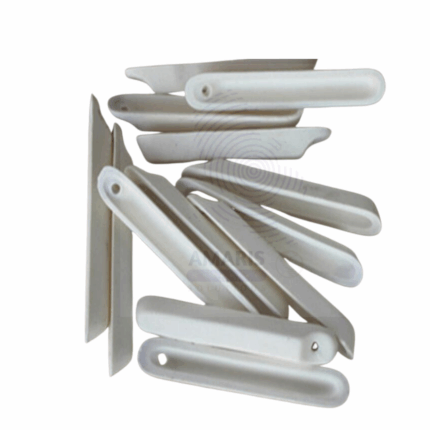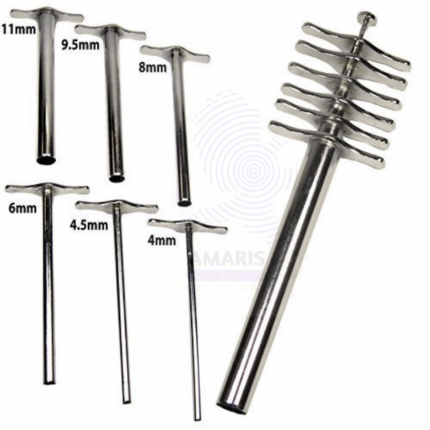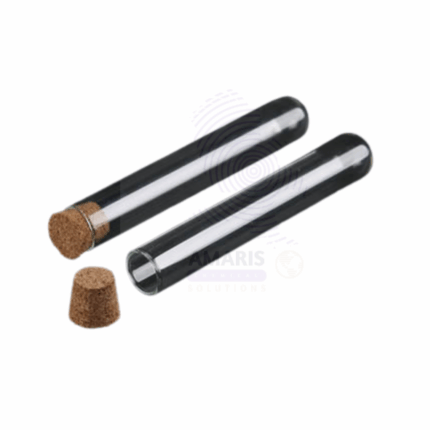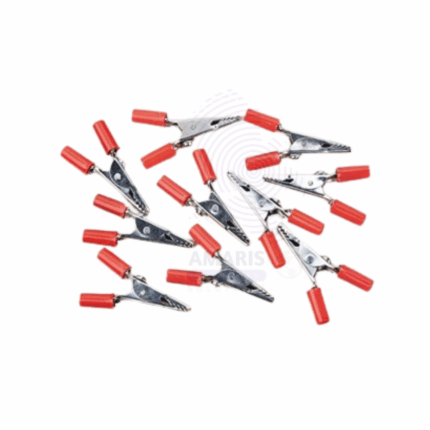PLASTIC WASH BOTTLE
Product Description
A Plastic Wash Bottle is a squeezable laboratory container designed to dispense liquids—usually water or solvents—in a controlled stream through a narrow nozzle or spout. Made from chemical-resistant, semi-flexible plastic such as low-density polyethylene (LDPE), polypropylene (PP), or fluoropolymer materials, the bottle allows for precision rinsing or washing of laboratory glassware, instruments, or surfaces without direct contact. The cap and nozzle are typically screw-fitted and designed to prevent leaks while enabling directional flow. It is a standard utility item in chemical, biological, educational, and analytical laboratories.
Primary Uses
Laboratory and Chemical Handling Applications
- Rinsing glassware such as beakers, test tubes, and flasks with distilled or deionized water.
- Dispensing solvents (ethanol, acetone, etc.) for cleaning or dilution procedures.
- Flushing residues during titrations or extractions.
- Directing controlled liquid streams into narrow or hard-to-reach vessels.
- Wetting filter paper or filling chromatography columns.
Secondary Uses
General and Maintenance Applications
- Cleaning lab benches or work surfaces by directed water or cleaning solutions.
- Rehydrating samples or biological tissues during lab prep.
- Used in medical, educational, and forensic settings for precision liquid application.
- Labelled wash bottles may carry specific reagents like NaOH, H₂O₂, or HCl for designated uses.
Plastic Wash Bottle
Product Description
A Plastic Wash Bottle is a squeezable laboratory container designed to dispense liquids—usually water or solvents—in a controlled stream through a narrow nozzle or spout. Made from chemical-resistant, semi-flexible plastic such as low-density polyethylene (LDPE), polypropylene (PP), or fluoropolymer materials, the bottle allows for precision rinsing or washing of laboratory glassware, instruments, or surfaces without direct contact. The cap and nozzle are typically screw-fitted and designed to prevent leaks while enabling directional flow. It is a standard utility item in chemical, biological, educational, and analytical laboratories.
Uses
Primary Uses
Laboratory and Chemical Handling Applications
- Rinsing glassware such as beakers, test tubes, and flasks with distilled or deionized water.
- Dispensing solvents (ethanol, acetone, etc.) for cleaning or dilution procedures.
- Flushing residues during titrations or extractions.
- Directing controlled liquid streams into narrow or hard-to-reach vessels.
- Wetting filter paper or filling chromatography columns.
Secondary Uses
General and Maintenance Applications
- Cleaning lab benches or work surfaces by directed water or cleaning solutions.
- Rehydrating samples or biological tissues during lab prep.
- Used in medical, educational, and forensic settings for precision liquid application.
- Labelled wash bottles may carry specific reagents like NaOH, H₂O₂, or HCl for designated uses.
Key Attributes
Basic Identification Attributes
- Material: LDPE, HDPE, PP, or fluoropolymer (for chemical compatibility).
- Design: Squeeze bottle with bent or straight nozzle; leak-proof cap.
- Volume: Typically available in 250 mL, 500 mL, and 1 L sizes.
- Labeling: Often comes with pre-labeled chemical names or color-coded caps.
Physical & Chemical Properties
- Flexibility: Semi-soft body allows easy squeeze action.
- Chemical Resistance: Compatible with most common lab solvents and acids.
- Transparency: Translucent body for monitoring liquid level.
- Temperature Resistance: Can withstand moderate heat; not suitable for autoclaving unless specified.
Safety & Hazard Attributes
- Prevents contamination and spills by enabling no-contact dispensing.
- Reduces risk of exposure when working with volatile or corrosive liquids.
- Capable of directional control to avoid splash-back.
Storage & Handling Attributes
- Store upright in cool, ventilated spaces.
- Keep bottles clearly labeled to avoid cross-contamination.
- Replace bottles showing cracks, stiffness, or discoloration.
Regulatory & Compliance Attributes
- Complies with general laboratory chemical storage and dispensing standards.
- May meet ISO or ASTM standards depending on manufacturer.
Environmental & Health Impact
- Reusable; reduces disposable plastic waste in the lab.
- Can be recycled depending on material and chemical exposure.
- Should be rinsed and disposed of according to local hazardous waste guidelines if used with dangerous chemicals.
Safety Handling Precautions
- Do not use with incompatible chemicals (e.g., strong oxidizers with LDPE).
- Ensure nozzle is free from clogs or chemical buildup.
- Always use with appropriate PPE depending on chemical content.
First Aid Measures
- In case of skin or eye contact due to accidental splashing, rinse thoroughly with water and follow MSDS protocol for the liquid used.
Firefighting Measures
- Plastic bottle is flammable; use appropriate extinguishing method for surrounding materials.
- Avoid storing near ignition sources if bottle contains flammable solvents.


 Preservatives(food)
Preservatives(food) Flavor Enhancers
Flavor Enhancers Acidulants
Acidulants Sweeteners
Sweeteners Antioxidants
Antioxidants Colorants(food)
Colorants(food) Nutraceutical Ingredients (food)
Nutraceutical Ingredients (food) Nutrient Supplements
Nutrient Supplements Emulsifiers
Emulsifiers
 Collectors
Collectors Dust Suppressants
Dust Suppressants Explosives and Blasting Agents
Explosives and Blasting Agents Flocculants and Coagulants
Flocculants and Coagulants Frothers
Frothers Leaching Agents
Leaching Agents pH Modifiers
pH Modifiers Precious Metal Extraction Agents
Precious Metal Extraction Agents
 Antioxidants(plastic)
Antioxidants(plastic) Colorants (Pigments, Dyes)
Colorants (Pigments, Dyes) Fillers and Reinforcements
Fillers and Reinforcements Flame Retardants
Flame Retardants Monomers
Monomers Plasticizers
Plasticizers Polymerization Initiators
Polymerization Initiators Stabilizers (UV, Heat)
Stabilizers (UV, Heat)
 Antifoaming Agents
Antifoaming Agents Chelating Agents
Chelating Agents Coagulants and Flocculants
Coagulants and Flocculants Corrosion Inhibitors
Corrosion Inhibitors Disinfectants and Biocides
Disinfectants and Biocides Oxidizing Agents
Oxidizing Agents pH Adjusters
pH Adjusters Scale Inhibitors( water)
Scale Inhibitors( water)
 Antioxidants(cosmetic)
Antioxidants(cosmetic) Emollients
Emollients Fragrances and Essential Oils
Fragrances and Essential Oils Humectants
Humectants Preservatives
Preservatives Surfactants(cosmetic)
Surfactants(cosmetic) Thickeners
Thickeners UV Filters
UV Filters
 Fertilizers
Fertilizers Soil Conditioners
Soil Conditioners Plant Growth Regulators
Plant Growth Regulators Animal Feed Additives
Animal Feed Additives Biostimulants
Biostimulants Pesticides (Herbicides, Insecticides, Fungicides)
Pesticides (Herbicides, Insecticides, Fungicides)
 Active Pharmaceutical Ingredients (APIs)
Active Pharmaceutical Ingredients (APIs) Excipients
Excipients Solvents(pharmaceutical)
Solvents(pharmaceutical) Antibiotics
Antibiotics Antiseptics and Disinfectants
Antiseptics and Disinfectants Vaccine Adjuvants
Vaccine Adjuvants Nutraceutical Ingredients (pharmaceutical)
Nutraceutical Ingredients (pharmaceutical) Analgesics & Antipyretics
Analgesics & Antipyretics
 Analytical Reagents
Analytical Reagents Solvents(lab)
Solvents(lab) Chromatography Chemicals
Chromatography Chemicals Spectroscopy Reagents
Spectroscopy Reagents microbiology-and-cell-culture-reagents
microbiology-and-cell-culture-reagents Molecular Biology Reagents
Molecular Biology Reagents Biochemical Reagents
Biochemical Reagents Inorganic and Organic Standards
Inorganic and Organic Standards Laboratory Safety Chemicals
Laboratory Safety Chemicals Specialty Laboratory Chemicals(Special Laboratory Equipment)
Specialty Laboratory Chemicals(Special Laboratory Equipment)
 Demulsifiers
Demulsifiers Hydraulic Fracturing Fluids
Hydraulic Fracturing Fluids Scale Inhibitors(oil)
Scale Inhibitors(oil) Surfactants(oil)
Surfactants(oil) Drilling Fluids
Drilling Fluids
 Dyes and Pigments
Dyes and Pigments Bleaching Agents
Bleaching Agents Softening Agents
Softening Agents Finishing Agents
Finishing Agents Antistatic Agents
Antistatic Agents
 Admixtures
Admixtures Waterproofing Agents
Waterproofing Agents Sealants and Adhesives
Sealants and Adhesives Curing Compounds
Curing Compounds Concrete Repair Chemicals
Concrete Repair Chemicals Anti-Corrosion Coatings
Anti-Corrosion Coatings
 Surfactants(cleaning)
Surfactants(cleaning) Builders
Builders Enzymes
Enzymes Solvents (Cleaning)
Solvents (Cleaning) Fragrances
Fragrances
 Electronic Chemicals
Electronic Chemicals Catalysts
Catalysts Lubricants
Lubricants Photographic Chemicals
Photographic Chemicals Refrigerants
Refrigerants Automotive chemicals
Automotive chemicals Pyrotechnic Chemicals
Pyrotechnic Chemicals
 Biodegradable Surfactants
Biodegradable Surfactants Bio-based Solvents
Bio-based Solvents Renewable Polymers
Renewable Polymers Carbon Capture Chemicals
Carbon Capture Chemicals Wastewater Treatment Chemicals
Wastewater Treatment Chemicals
 Pigments
Pigments Solvents(paint)
Solvents(paint) Specialty Coatings
Specialty Coatings Binders/Resins
Binders/Resins Additives
Additives Driers
Driers Anti-Corrosion Agents
Anti-Corrosion Agents Functional Coatings
Functional Coatings Application-Specific Coatings
Application-Specific Coatings
 Fresh Herbs
Fresh Herbs Ground Spices
Ground Spices Whole Spices
Whole Spices Spice Blends
Spice Blends Dried Herbs
Dried Herbs
 Leavening Agents
Leavening Agents Dough Conditioners
Dough Conditioners Flour Treatments
Flour Treatments Fat Replacers
Fat Replacers Decoratives
Decoratives Preservatives(baking)
Preservatives(baking)
 Plasticizers & Softeners
Plasticizers & Softeners Reinforcing Agents
Reinforcing Agents Adhesion Promoters
Adhesion Promoters Vulcanizing Agents
Vulcanizing Agents Antidegradants
Antidegradants Blowing Agents
Blowing Agents Fillers & Extenders
Fillers & Extenders Accelerators & Retarders
Accelerators & Retarders